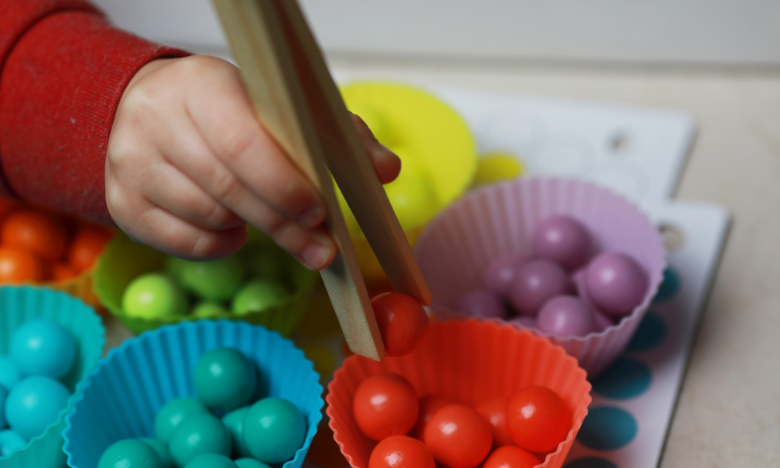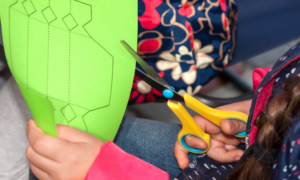11 fun activities to improve fine motor skills

11 fun activities to improve fine motor skills in children with learning disabilities and ADHD
What are fine motor skills and why is it so important to improve fine motor skills in children? Imagine simple daily activities like holding a pen, using a keyboard, using rulers, and scissors, getting dressed, and brushing your teeth were difficult for you. We take all these daily activities for granted and they become second nature. We don’t have to think or struggle while doing these tasks. These tasks are some examples of fine motor skills. It is our fine motor skills that allow us to conduct essential tasks in school like drawing, and writing neatly, at our jobs, and in everyday life.
What are fine motor skills
Fine motor skills refer to an individual’s ability to make movements with the help of the small muscles present in the hands and wrists. Given the examples, it is evident that fine motor skills are of great importance in our day-to-day lives.
Now think of a child who has poor fine motor skills, these small everyday tasks are huge for them, and they have to struggle every day to be able to conduct these tasks. Given the struggles a young child’s confidence might suffer, their academic performance also takes a hit and their option for play also become limited. Children with learning disabilities and ADHD that have problems with fine motor skills also find it difficult to gain independence in their ‘life’ skills like feeding themselves which then also has social implications in their relationships with family and peers.
Fine motor skills begin developing during infancy and keep improving as one gets older. Children do not develop or grow at the same pace. However, there are some developmental milestones that are specific to a certain age. For example, a nine-month-old infant should ideally be able to crawl and be able to start pulling themselves up to a standing position, they should be able to point at things, be able to reach for and grab a toy and be able to start picking up small pieces of food. If these milestones are not met even after a certain age, one can determine that the child has poor fine motor skills.
Here is a list of 11 fun activities to improve fine motor skills.
Getting your child to use playdough
Playdough is a fun activity to improve your child’s fine motor skills. Get your child to bend, squeeze, stretch, pinch and, roll “snakes” and “worms” with it. This activity does not just strengthen your child’s hand muscles to develop their fine motor skills, but it also helps in improving your child’s creativity.

Painting
Painting is another fun activity that is helpful for your child. Finger painting would allow your child to use their fingers to develop their fine motor skills. Painting with brushes, on the other hand, would get your child to strengthen their grip and gain more control using it.
Rice and cereal racing
Rice and cereal racing is an activity that you or a sibling can do with the child. It’s as simple as taking two bowls of uncooked rice grains, two tweezers, and an empty bigger bowl. The idea is to have a race between the two individuals to see who is able to empty their bowl of rice first by picking the rice grains with the help of the tweezer. This activity, just like using the brush during painting would allow the child to gain more control on using the tweezers and thus help improve fine motor skills. If you think, your child might have trouble in picking up the rice grains due to their small size, you can use ‘O’ shaped cereals as an alternative.
Sponge Play
You need no preparation for this activity, just take two bowls and a sponge. Fill one of the bowls with water, while leaving the other one empty. Get your child to soak the sponge in the water and then squeeze it out in the empty bowl. This activity helps your child strengthen their hands and forearms, thus positively impacting their fine motor skills.
Scooping and pouring activities
This activity can also be very useful to improve fine motor skills. In order to make the sensory bin for scooping and pouring, you would need a filler (things that the child would be scooping and pouring; these can include rice, cereal, popcorn kernels, dried beans, etc), a bin to catch the filler after it has been poured and to keep it contained and a bowl that would house the filer in the beginning. Such pouring and scooping activities require dexterity that is used in many basic life skills. You would be surprised how long children especially toddlers spend doing this activity.
Water Play
For this activity, you just fill a glass of water (a quarter) and give your child an empty cup and an eyedropper. Ask your child to transfer water into the empty cup with the help of the eyedropper. To make this activity more interesting for your child, you can add more cups and add food-colour to the water to excite them and they can also experiment with different colours.
Gardening and planting
Gardening may seem like an activity to improve one’s gross motor skills, but there are certain aspects to it that need control over small muscles too. For example, your child would need to grasp a trowel to dig and they would also need to make use of the pincer gap to pick up seeds to plant.

Scissors skills
Being able to use the scissors also helps a child improve fine motor skills. Your child can use scissors to cut and trim weeds around gardens, they can use them to cut playdough that has been rolled into strings or worms. Strengthen and improve fine motor skills by cutting paper, straws, strings, and ribbons. Let your child start with simple cutting skills like cutting their food like hot dogs, cooked noodles, and tortillas, and then graduate to some complex cutting.
Playing with coins
Stacking coins together to create a coin tower or sorting them into different types of coins into separate containers is also a way to improve fine motor skills.
Pegboard activities
Pegboards are brilliant for developing or improving fine motor skills. Your child would enjoy this activity of grasping colourful pegs and placing them into the hole. They can be as creative as they want and make different shapes, alphabets or numbers out of the pegs.
Sandpit play
A sandpit is often a child’s favourite place to play, in the sandpit children are able to work on their finger muscles and improve the strength and control of these muscles. These improvements are the result of digging the sand, shaping sand and mud into shapes and putting fine, minute details in their various creations like placing twigs (to represent candles) on ‘birthday cakes’ made of sand. If you don’t have access to a sandpit near your home, you can create a small sandpit in a container and let your child play with sand.
Enjoy these fun activities regularly at home with your child and see a sharp change in their fine motor skills. These activities would allow your little ones to master their fine motor skills all while playing and exploring.